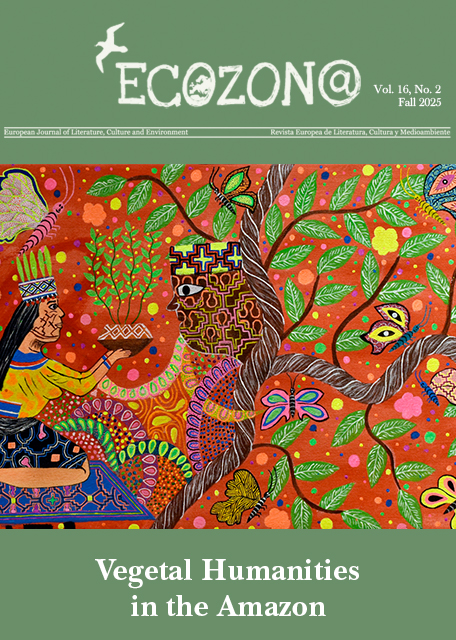A Saga for Dinner: Landscape and Nationality in Icelandic Literature
DOI:
https://doi.org/10.37536/ECOZONA.2011.2.1.391Palabras clave:
Iceland, landscape perception, nationalism, medieval literature, environmental literature / Islandia, percepción del paisaje, nacionalismo, literatura medieval, literatura ambientalResumen
Iceland’s attempted industrialisation through an expansion of hydropower and aluminium smelters can lead to a significant reshaping of the country’s landscapes. There has been considerable resistance against such plans since the 1970s, culminating in the debate about the Kárahnjúkar project between 2001 and 2006. The book Draumalandið. Sjálfshjálparbók handa hræddri þjóð [Dreamland. A Self-Help Manual for a Frightened Nation] by the writer Andri Snær Magnason has been particularly influential. It combines ecological consciousness with an appreciation of Iceland‘s literary tradition and history. Thus it displays a view of landscape which connects nature preservation closely to cultural achievements and to national sovereignty. This perception of landscape originates from the assumption that Iceland experienced a golden age from the beginning of colonisation in the Viking age until the subordination under the Norwegian and later Danish kings in the 13th century, which led to an all-embracing degeneration. Nationalist poets such as Jónas Hallgrímsson in the 19th century based their demands for independence on Iceland‘s medieval saga literature and the country‘s landscapes. These seemed to provide evidence for a high culture in unity with nature during the time of the Commonwealth. Although the historical reliability of the sagas is doubtful, they are still used as an important argument in Draumalandið. Now the narratives as such are put in the foreground, as they can give value and meaning to the landscapes and places they describe. Thus a turn from a realistic to a more constructivist perception of landscape can be observed in contemporary Icelandic environmental literature.
El intento de Islandia por industrializarse a través de la expansión hidroeléctrica y fundiciones de aluminio puede llevar a la reestructuración significativa del paisaje nacional. Existe una resistencia considerable a estos planes desde los 70`, culminando entre el 2001 y 2006 en el debate sobre el proyecto Kárahnjúkar. El libro Draumalandið. Sjálfshjálparbók handa hræddri þjóð [País de sueños. Un manual de autoayuda para una nación temerosa] del escritor Andri Snær Magnason ha sido particularmente influyente. El libro combina conciencia ecológica con una apreciación histórica y tradicional islandesa, presentando una mirada paisajística que conecta de forma cercana la preservación de la naturaleza con logros culturales y soberanía nacional. La percepción de paisaje se origina a partir del supuesto de que Islandia experimentó una edad de oro desde el comienzo de la colonización, en la época vikinga, hasta la subordinación bajo los reinos noruegos y daneses (siglo XIII), la que llevó a una envolvente degeneración. Poetas nacionalistas como Jónas Hallgrímsson (siglo XIX), basaron sus demandas independencistas en las sagas medievales y en los paisajes del país. Esto proporcionó evidencia de una cultura unida con la naturaleza durante el “Commonwealth”. Aunque la fiabilidad histórica de las sagas es dudosa, aún son usadas como un importante argumento en Draumalandið. Actualmente las narraciones como esta pueden dar valor y sentido al paisaje y los lugares que se describen. En este contexto, en la literatura ambiental islandesa contemporánea se observa la existencia de un giro desde una percepción realista del paisaje a una más constructiva.
Descargas
Descargas
Archivos adicionales
Publicado
Número
Sección
Licencia
Authors who publish with this journal agree to the following terms:
a) Authors retain copyright and grant the journal right of first publication with the work simultaneously licensed under a Creative Commons Attribution License that allows others to share the work with an acknowledgement of the work's authorship and initial publication in this journal (CC BY-NC for articles and CC BY-NC-ND for creative work, unless author requests otherwise.
b) Authors are able to enter into separate, additional contractual arrangements for the non-exclusive distribution of the journal's published version of the work (e.g., post it to an institutional repository or publish it in a book), with an acknowledgement of its initial publication in this journal.
c) Authors are permitted and encouraged to post their work online (e.g., in institutional repositories or on their website) prior to and during the submission process, as it can lead to productive exchanges, as well as earlier and greater citation of published work (See The Effect of Open Access).










